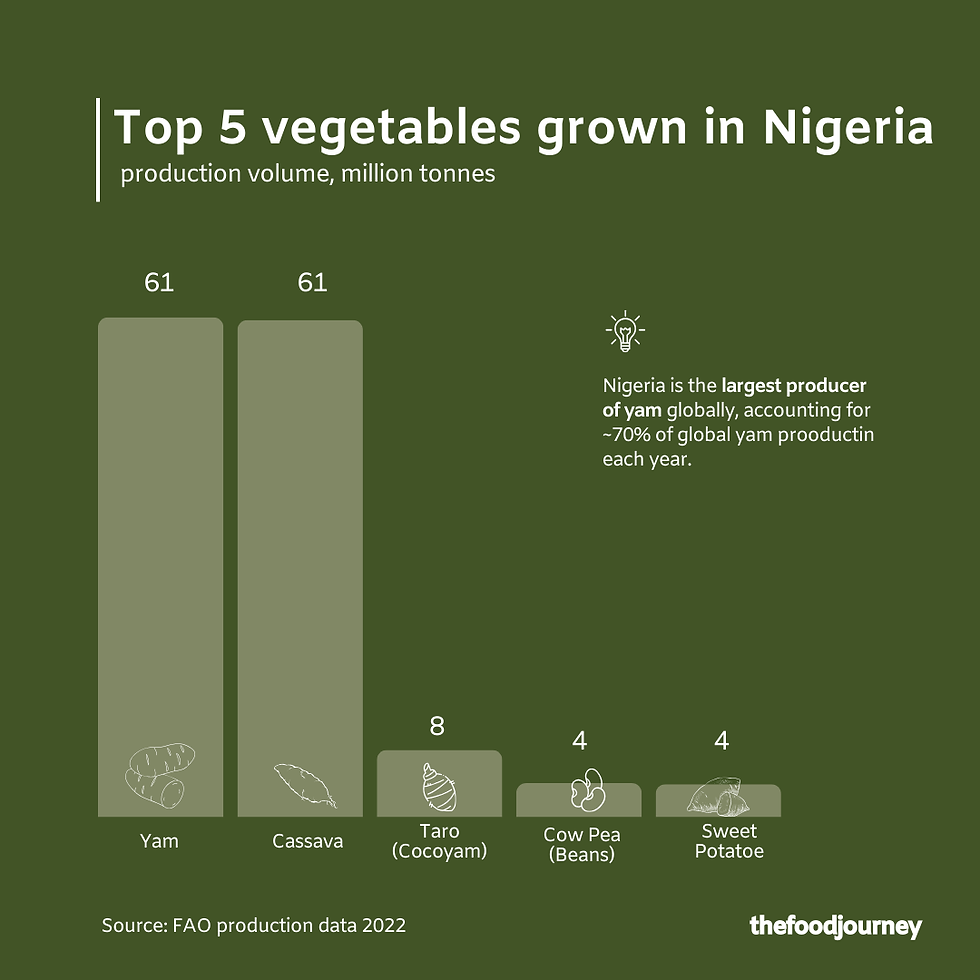A Deep Dive into Nigerian Vegetable Farming
- S. K. & Popsy
- Dec 9, 2024
- 2 min read

In our last article, we explored soil and its vital role in agriculture. Now, we turn our attention to what grows from that soil—vegetables.
Vegetables play a vital role in the daily lives of Nigerians. It is essential for both food and income, offering endless possibilities for farmers and communities. In this article, we discuss Nigerian vegetable farming. We'll explore the top five most
cultivated vegetables, and the diverse range of options available.
Top 5 Most Produced Vegetables in Nigeria (by volume)
According to the FAO, the following were the top 5 vegetables produced in Nigeria in 2022 by volume:
Yam
A staple food, particularly in the southern part of Nigeria, yam is a versatile root vegetable with approximately half of all Nigerian households consuming the crop regularly. Nigeria is the world’s largest producer of this root vegetable, with Benue State, the top producing state.
Cassava
Another staple, particularly in southern Nigeria, Cassava is used to make various products like garri, fufu, and cassava flour. It is primarily cultivated through stem cuttings, with Ogun, Ondo, and Osun as major producing states.
Taro (Cocoyam)
Cocoyam is a popular root vegetable primarily cultivated in the southern and eastern parts of Nigeria. Key producing states include Rivers, Akwa Ibom, and Cross River
Cowpea
A legume widely cultivated and consumed as beans, Cowpea is a valuable source of protein. Major producing states include Kaduna, Kano, and Katsina.
Sweet potato
This root vegetable is a good source of carbohydrates and vitamins. It’s propagated through vine cuttings or tubers, with Ogun, Oyo, and Osun being major producing states.

Beyond the Top 5
Nigeria’s vegetable basket extends far beyond the top 5. We categorize them into these five diverse categories:
Leafy Greens: High in vitamins, minerals, and fiber. They often have a dark green color and are commonly used in soups, stews, and salads
Roots and Tubers: Starchy and nutritious, they often have a firm texture and are used as a base for meals or as a side dish
Fruits: A part of a flowering plant that contains seeds and is typically sweet or savory
Legumes: A type of seed that grows in pods. They are a valuable source of protein, fiber, and other nutrients.
Bulbs and Alliums: Plants with underground storage organs that consist of layers of fleshy scales. They are often used as flavorings or seasonings.
For a full list of Nigeria’s vegetables and examples under each category, download our Nigerian Vegetable Guide.
コメント